Lightning strikes Stanford’s Hoover Tower – again
A bolt of lightning struck Hoover Tower for the second time in almost 50 years, causing some visible damage to the building’s recognizable silhouette.
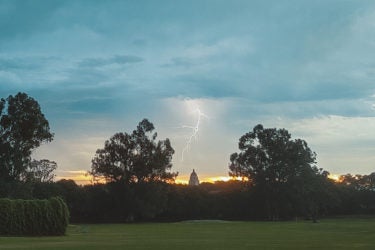
Image credit: Michael Fischer
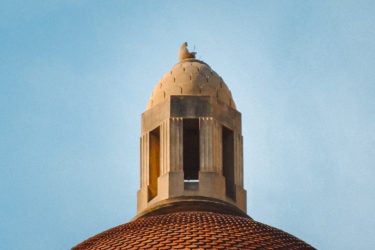
Image credit: Brad Hayward
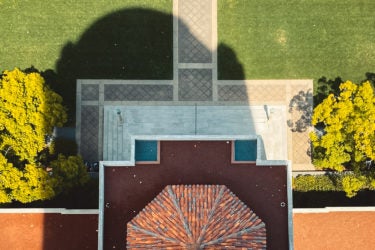
Image credit: Kelly Doran
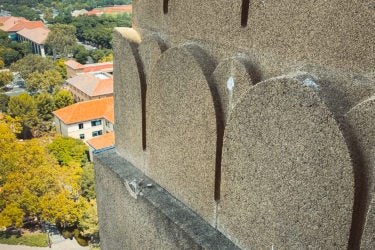
Image credit: Kelly Doran
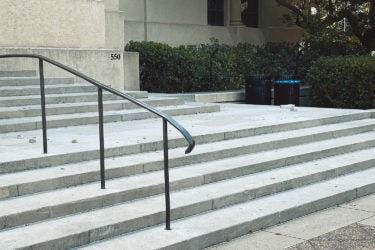
Image credit: Kelly Doran
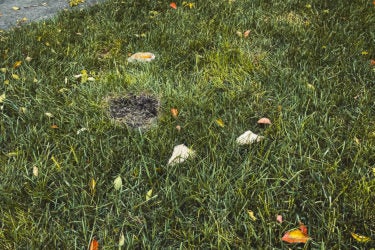
Image credit: Kelly Doran
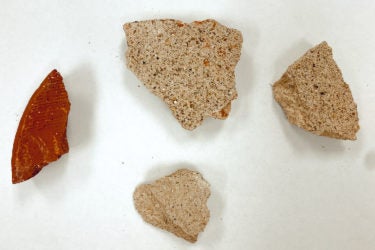
Image credit: Kelly Doran
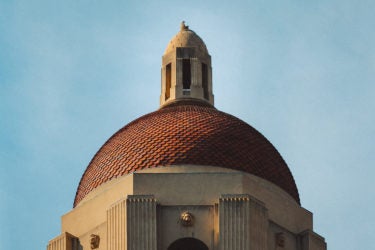
Image credit: Brad Hayward
Despite the age-old adage, lightning can and does sometimes strike the same place twice, as proven this weekend by one of Stanford’s most prominent landmarks: Hoover Tower. Thanks to an unusual summer lightning storm, the concrete orb at the apex of its red-roof dome was shattered as millions of volts of electricity zapped the structure.
Though the weather – brought on by a strong heatwave – was quite unexpected, the strike to Hoover Tower itself was slightly less so – the same thing happened nearly 50 years ago.
At 6:30 a.m. on Dec. 2, 1970, Hoover Tower was hit by lightning. Then, as now, the concrete ball at the top of the tower took the brunt of the blow. The shattered pieces landed in the parking lot below, leaving gashes up to 6 inches long in the pavement. “The Hoover catalog department had several chunks of the concrete ball on shelving as souvenirs,” recalled Elena Danielson, former associate director of the Hoover Institution and director of the Hoover Library and Archives. Danielson says she asked the staff to have the chunks cataloged and placed in the archive’s memorabilia cabinet. Engineers even asked to borrow the chunks to determine the curvature for its replacement, which would be a hollow sphere instead of a solid one. “Now we can add another box,” Danielson said.
This time around, shards of ball debris fell onto the first-floor roof, the front steps and lawn, but the full extent of the damage is still unknown. “We’re in touch with our Zone office to begin the process of assessment and plan for repairs,” said Jeffrey M. Jones, assistant director of operations. “We may not have all the answers at this early stage, but there was a conductor installed previously and it may have reduced the damage.”
At 285 feet tall, the campus icon is more vulnerable to such strikes than its low-lying neighboring buildings. But lightning is still a rare enough occurrence in the region that it prompted a couple of attention-grabbing social media posts from eyewitnesses.
Hari Manoharan, an associate professor of physics in the School of Humanities and Sciences, lives a few minutes from Hoover Tower and was awake watching the storm when he recalls a flash of light illuminating his entire home. “It was like all the lights had been turned on inside, followed by a huge crash sounding like an explosion,” said Manoharan. After visiting the tower later that day, Manoharan and his wife are convinced that it was the strike that hit Hoover Tower.
Michael Fischer, a Stanford computer science PhD student, managed to capture an image of the strike. He stopped at the Stanford driving range to take a couple of pictures of the sunrise following the thunderstorm. “I pushed my phone up against the fencing there and started video recording,” said Fischer. “Then, at 6:43 a.m., I noticed that lightning hit Hoover Tower.” He too, stopped by the tower later that day to see for himself the pieces of concrete littering the ground.
